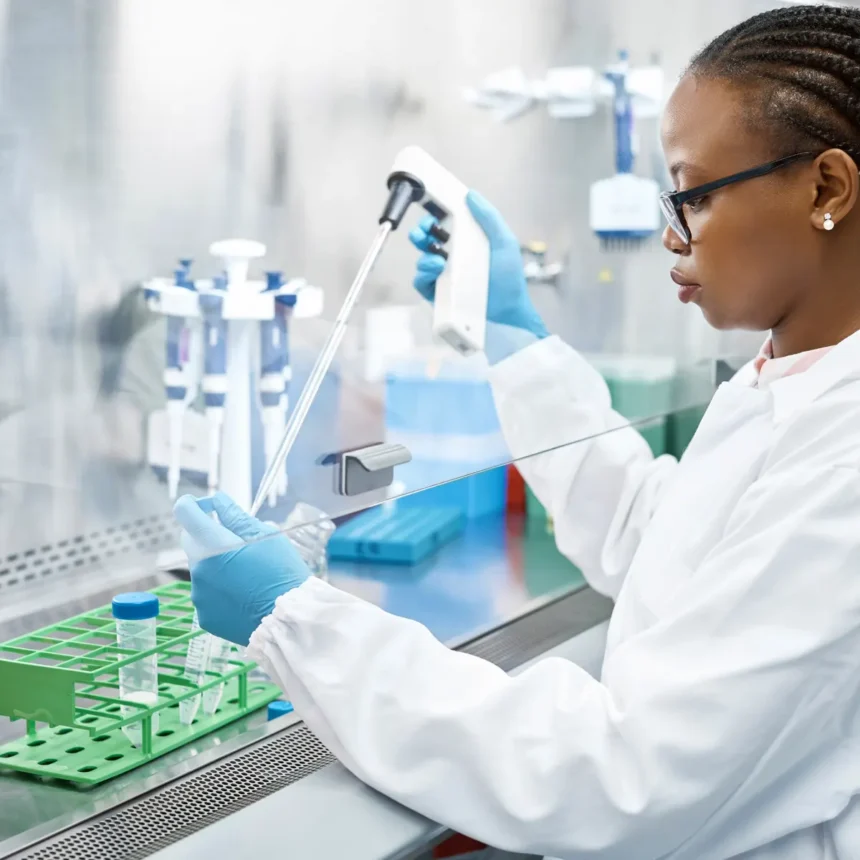Increased Cancer is a formidable adversary that affects millions of lives worldwide, and researchers continually strive to uncover its underlying causes. A recent groundbreaking study has shed light on a concerning connection: the link between chemical exposures and an increased risk of cancer in women. This revelation underscores the urgent need for greater awareness and regulatory action to protect public health.
The Study’s Alarming Findings

The study, conducted by a team of dedicated researchers and published in a prominent scientific journal, delved into the effects of chemical exposures on cancer risk. It encompassed a diverse group of women, spanning different age groups, regions, and backgrounds. The findings were both compelling and disconcerting.
1. Elevated Cancer Risk: The research uncovered a clear correlation between chemical exposures and elevated cancer odds in women. Chemicals found in everyday products, such as personal care items, cleaning agents, and even certain foods, were implicated in this alarming trend.
2. Disproportionate Impact: The study also revealed that certain communities and demographics are disproportionately affected by this risk. Low-income communities, where residents may have limited access to safer alternatives, faced a higher burden of chemical exposure-related cancer cases.
Identifying the Culprits

The culprits behind this concerning trend are a group of chemicals known as endocrine-disrupting chemicals (EDCs). EDCs are substances that interfere with the body’s endocrine system, which regulates hormones essential for various bodily functions. These chemicals can mimic hormones or disrupt their natural production, leading to adverse health effects.
1. Phthalates: Phthalates, commonly found in cosmetics and personal care products, were identified as significant contributors to the heightened cancer risk. They are known for their hormone-disrupting properties and have been associated with a range of health issues.
2. BPA (Bisphenol A): BPA, present in plastic products like food containers and beverage cans, also emerged as a key offender. Research has linked BPA to hormonal imbalances and an increased risk of breast and ovarian cancers.
3. Pesticides: Pesticides used in agriculture, gardening, and food production were another concerning factor. Women exposed to these chemicals faced a higher likelihood of cancer
Advocating for Change

The study’s findings have ignited a call to action from scientists, healthcare professionals, and advocates worldwide. They argue that immediate steps must be taken to address this pressing issue and protect the health and well-being of women.
1. Regulatory Reforms: One of the primary demands stemming from this research is the need for stricter regulations on EDCs. Advocates are urging government agencies to reassess and potentially ban the use of these harmful chemicals in consumer products.
2. Consumer Awareness: Empowering consumers with knowledge is crucial. Campaigns to educate the public about the risks associated with EDCs and how to make safer choices in everyday life are gaining momentum. Women are encouraged to scrutinize product labels and choose items that are free from harmful chemicals.
3. Industry Responsibility: Many are calling on industries to take responsibility for the products they manufacture and sell. This includes developing safer alternatives to the chemicals in question and adopting more transparent labeling practices.
4. Research Continuation: The study is seen as just the beginning. Advocates and scientists emphasize the need for further research to delve deeper into the connections between chemical exposures and specific cancer types. More comprehensive data will enable more targeted preventive measures.
Empowering Women with Knowledge

Perhaps the most critical aspect of this revelation is the empowerment of women to take control of their health. Understanding the potential risks associated with certain chemical exposures allows individuals to make informed choices and advocate for change.
In this era of heightened awareness about environmental and health concerns, women and their allies are using their collective voices to push for safer products, stricter regulations, and a brighter, healthier future. The study linking chemical exposures to increased cancer odds in women serves as a stark reminder that our actions, both individually and collectively, have a profound impact on our health and the world we inhabit.
As we navigate this evolving landscape of scientific discovery and advocacy, one thing remains certain: the pursuit of knowledge and the commitment to protecting public health will continue to drive us toward a safer, healthier, and more informed society.
ALSO READ:NASA’s First Asteroid Samples Touch Down on Earth: A Historic Milestone Of OSIRIS-REx




































